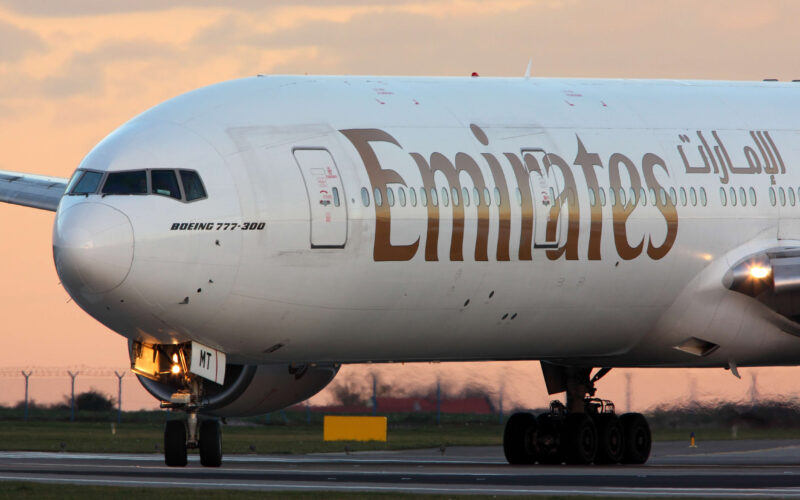An incident involving an Emirates Boeing 777-300 that failed to climb out properly on take-off from Dubai International Airport (DXB) on December 20, 2021 is under investigation.
The aircraft, registered A6-EQI, took off from Emirates’ home base from runway 30R, bound for Washington Dulles (IAD) in the United States as flight EK231. While it made it safely to the United States, flight tracking data from the take-off cited by safety publications shows the aircraft came close to disaster.
The Aviation Herald said the aircraft sped up to at least 216 knots while still on the runway, taking off late, and that it may have sustained some damage during the departure.
According to The Air Current, the 777 did not climb after take-off, but accelerated to over 260 knots less than 200 feet above the ground. The speed limit for aircraft is usually 250 knots below 10,000 feet.
The Air Current, citing FlightRadar24 data, reported that at one point the aircraft was flying at just 175 feet at 1.7 nautical miles (3.1km) from the end of the runway, over the neighborhood of Deira. The publication said FlightRadar24 data from another flight two days later showed an altitude of 1,550 feet at the same point.
Despite the incident, the aircraft continued on to Washington, DC, where it landed safely.
Under investigation
An Emirates spokesperson confirmed to AeroTime that “a technical incident” occurred during the departure of EK231 on December 20, 2021. “The flight continued safely to its destination, and after technical clearances the aircraft operated the return flight to Dubai.”
The occurrence is being investigated, Emirates said. “The incident is under investigation and we are unable to provide further comment at this time.”
AeroTime has emailed the UAE General Civil Aviation Authority (GCAA), which would be responsible for the investigation, for comment but has yet to receive a reply.
The Emirates spokesperson added: “Safety is at the heart of everything we do and would never be compromised.”
The Federal Aviation Administration in the United States said it was “aware” of the incident. As the state of manufacture of the Boeing aircraft, the United States would expect to be invited to join the investigation into the incident.
“Civil aviation authorities in the United Arab Emirates are in charge of the investigation,” the FAA said in an emailed statement.
Was an altitude setting involved?
Both The Aviation Herald and The Air Current noted that an altitude setting on the aircraft may have led the plane’s flight directors – guidance bars on the pilots’ main displays that indicate whether a turn or attitude change is required to maintain the programmed flight path – to provide the pilot with a nose-down guidance, rather than the nose-up attitude usually maintained after rotation.
Both publications cited a memo sent to crew by Emirates on December 27, 2021 regarding altitude settings on the mode control panel (MCP) of the aircraft.
“There have been times when the MCP “altitude window” has been set to the airport elevation which may cause issues on the subsequent departure,” the memo read. According to the notice, if the MCP altitude switch, which is usually set before take-off to the first cleared altitude, has been previously set to within 20 feet of the airport elevation and then shut down, the autopilot flight director system will engage in a different mode to that usually used for take-off when it is first turned on.
The memo said there were no formal procedures stating that pilots should change the mode control panel after landing and shut down. “Crews shall not set airport elevation on the MCP after landing or shut down,” the memo concludes.
As with any aviation incident, it is far too early to know the exact causes. For that, a full investigation, which may take up to two years is required.

